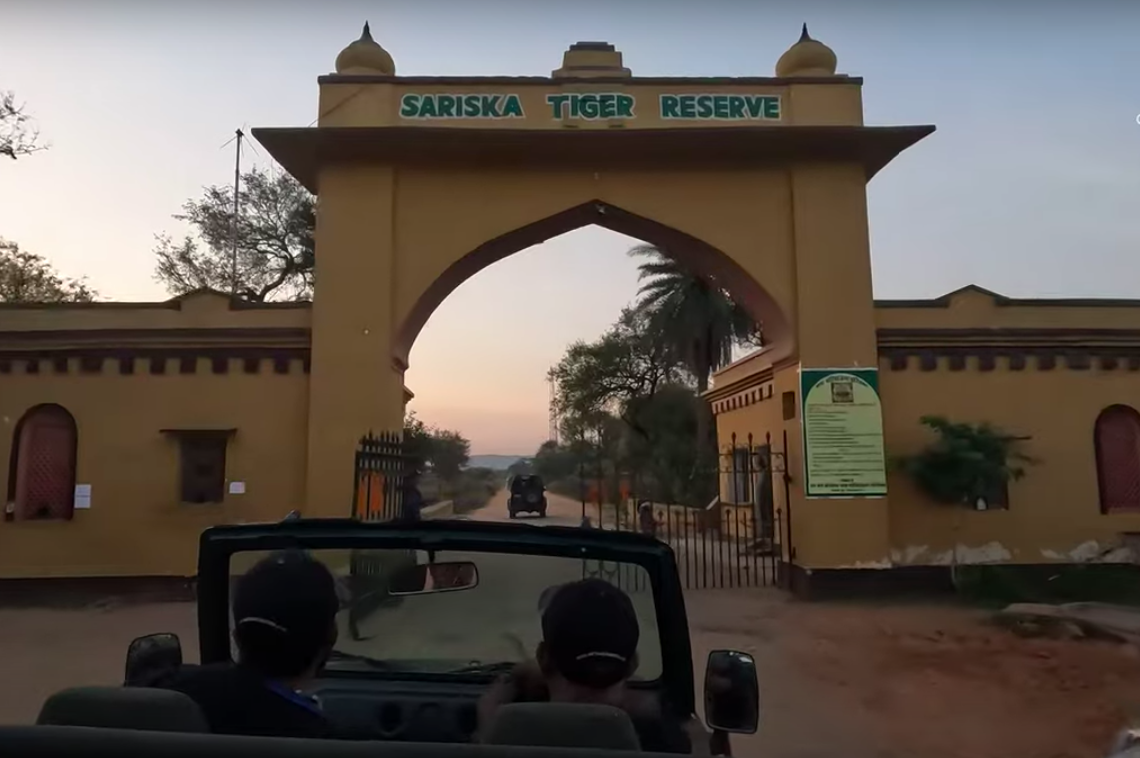
October 4, 2023
Wednesday, 10:00 PM
Sariska Tiger Reserve
Alwar, Rajasthan
If you are wildlife photographer, or want to be one, be prepared for such days as I had today — actually, be prepared for much, much worse because I did get to see a tiger at the end, even though for a very brief moment that could not yield a great photographic opportunity. In the morning safari, all that I found were pugmarks, pugmarks, pugmarks. And no tiger. In the evening, we found pugmarks, pugmarks, pugmarks and also heard calls from here, there and everywhere but found no tiger at all even though I did click other pictures, so I am not exactly complaining apart from this little rant about having seen no tiger… but then as I was returning, disappointed and tired, there she was! A female tiger walking down. So we slowed down, but the sight did not last long, for the lady tiger decided to disappear into the bushes although she did it at such majestic pace that I could behold — admiringly — her waving tail for a good five seconds. Not bad for the day even though I didn’t exactly click any wonderful pictures of that solitary tiger I came across.
Alright, now about the villagers I had met yesterday and about whom I had promised to talk about yesterday (remember the postscript yesterday?). So in order to minimize human-animal conflict, the government constantly endeavours to vacate the villages too close to the tiger sanctuaries by relocating the villagers. The Government of Rajasthan has also been trying to do the same for a while, and while a number of villages have been thus vacated, there are still some that are in the process of being vacated. One of such villages is Paanidhaal. Most of the inhabitants of this village have been relocated, and there are only about two or three households that await relocation.
So I went to this village (Paanidhaal), and even though I did not find many people because most of the people had gone out to graze cattle, which is what they mainly do because they live mostly on milk and ghee obtained from the cattle, but I did meet three members of a family — an old woman of about ninety; her son, in his late sixties or early seventies; and a young man, who was the son of the younger brother of the older man. This young man’s father (the younger brother of the older man) has already been relocated, but the old woman and her elder son (the young man’s daadi and taau) are reluctant to move because they have spent all their lives in this place, which is basically a part of the jungle and they are very attached to the place. The old woman has barely seen the world outside the jungle. The young man thinks it is important to relocate to have a better life but to his daadi and taau, all the life they want is right there in the jungle. His taau says that even if everybody leaves, he would still stay back alone for the rest of his days.
Tigers and wild animals do not scare them despite several encounters with the big cats. And although several of their cattle have fallen prey to the tigers but they remain unharmed. They say that when they come across a tiger, they just close their eyes and pray to god, and the tiger walks away, which might well be the case because tigers do not attack unless they see a living being as a threat or food, and a stationary human being is neither. Tigers do not see human beings as prey except when they act as one by trying to run away; and also do not see them as a threat either unless the human being makes a sudden move and startles the animal, thereby seeming like a threat. So a human being mumbling a prayer, which can be little more than unfamiliar but harmless grunts to a tiger, is just an odd, boring creature to be left alone.
They offered us a cup of tea made of thick buffalo milk, which we drank gratefully. And after chatting with them some more, we thought it fit to leave as the sun was down and the darkness of the evening was beginning to fall in.